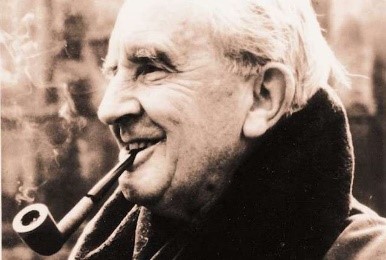
This project promotes open access materials and has been funded with support from the European Commission - Erasmus+ program. These materials reflect the views only of the author, and the Commission cannot be held responsible for any use which may be made of the information contained therein.
[Project Number: 2016-1-HR01-KA201-022159]
![]()
Book title
The fun they had
Author
Isaac Asimov

Bibliographic information
Publisher: Doubleday
The Best of Isaac Asimov
ISBN: 978-0385050784
Links (adaptations, reviews, full texts etc.)
- http://visual-memory.co.uk/daniel/funtheyhad.html
- http://schd.ws/hosted_files/readwrite/9f/Fun-They-Had-ST.pdf
Theme
The things we take for granted because we don’t know more; we grow up with them and we don’t even imagine they can be different.
Short summary
Set in the year 2155 (2157 in some later versions), when children learn individually at home using a mechanical teacher, the story tells of eleven-year-old Margie Jones, whose neighbour Tommy finds a real book. The book tells about a time when children learned by age group in large schools that were not merely designated rooms in private houses as in the year 2157. Margie and Tommy discuss what it must have been like to study together with a real person as a teacher, and though at first Margie is skeptical about the notion, by the end of the story she daydreams about what it must have been like and 'the fun they had'.
Why is the story appropriate for the targeted groups of RSP readers?
- It reflects readers´ interests
- It’s highly motivational
- It reflects political/historical moment
- recommendations and the report emerged from the survey results
What are the distinguished readers interests reflected by this book/story?
-
Why is this story motivational for the pupils?
The short story is a memory of traditional schools when students still visited schools. There is the irony that our students do not appreciate the possibility of visiting schools and having classmates.
Is there a historical, political, multi/inter cultural, migrant or similar context recognized in this book/story?
The story depicts the future vision of schools and there is a comparison with the contemporary schools.
Is there a principle of inclusion reflected in this book/story and does it promotes understanding of cultural diversities and heritage?
The short story shows that schools do not provide only education but relationships and cooperation with teachers and classmates can contribute to our personal development.
Book title
The Gypsy, But the Most Beautiful
Author
Kristian Novak

Bibliographic information
Kristian Novak: Ciganin, ali najljepši
Nakladnik: Naklada OceanMore (2016.)
ISBN 9789533320496
Links (adaptations, reviews, full texts etc.)
Theme
Contemporary. The mysterious murders and intricate investigations in Međimurje, the border region in the north of Croatia, with three major fabulous parts: the great and the tragic, the forbidden love of a Croatian woman and a Roma in their settlements, the fate of a Kurdish refugee from Mosul and the investigation of a police inspector, a veteran of war.
Short summary
„The Gypsy, But the Most Beautiful" by Kristian Novak is a crime story, with an enigma, brutal killings of the unknown and an investigation. The four characters tell the same story in confessional form in rashomon way. Milena, the middle -aged of woman from Međimurje, returns to her native village of Sabolščak after her marriage broke down and she got sacked. Her young lover, Roma, Sandokan, known as Sandi, tries to live somewhere in the limelight between his own and the 'whites', where neither his nor 'strangers' really truly accept him. He does not belong anywhere. Then there is Nuzat, a Kurd on a refugee journey from Mosul, to Calais. On the hopeless journey, Nuzat loses money, health, humanity and freedom, not coming to that, almost mythical, Calais. And finally, there is Zagreb Police Inspector Plancic, a merciful opportunist. The novel covers broadly, the course of several lives will meet between the Drava and Mura streams. It brings two biographies "from the cradle to the grave", captures and reconstructs at least three cultural circles, giving strong psycho portraits of their four speakers and the abundance of mass psychology.
Why is the story appropriate for the targeted groups of RSP readers?
The theme is contemporary, from Croatian reality, understandable to a young reader with the attractive motifs of police investigation, exotic surroundings, social and political turmoil and passionate forbidden love.
What are the distinguished readers interests reflected by this book/story?
Intertwined socio-historical, criminal, love, political motifs of, in accordance with the expressed interests in conducted surveys.
Why is this story motivational for the pupils?
The short story is a memory of traditional schools when students still visited schools. There is the irony that our students do not appreciate the possibility of visiting schools and having classmates.
Is there a historical, political, multi/inter cultural, migrant or similar context recognized in this book/story?
The novel deals with several identities: one is the majority, the white one, the other is the minority, the Roma, the third is the Croatian, the fourth is the refugee, the Kurdish and the Arab. There are convincible descriptions of the Roma village, multicultural and intercultural clashes, refugee camps and troubled journeys to the unknown, as well as the atmosphere in Mosul, long lines of refugees crossing the rivers between Turkey and Greece, Greece and Macedonia ..., unusual meetings of migrants from the East and Roma minority in Medjimurje ...
Is there a principle of inclusion reflected in this book/story and does it promotes understanding of cultural diversities and heritage?
The principle of inclusion is reflected throughout the novel, which strongly and deeply promotes the ideas of coexistence, support for differences and the different empathy, acceptance and understanding of cultural differences and the socio-historical heritage.
Book title
The Lord of the Rings – The Hobbit
Author
J. R. R. Tolkien

Bibliographic information
Paperback, 366 pages
Published: August 15th 2002 by Houghton Mifflin (first published September 21st 1937)
Original Title: The Hobbit : or There and Back Again
ISBN 0618260307 (ISBN13: 9780618260300)
Edition Language: English
Series: Middle-Earth Universe, The History of the Hobbit #1-2
Links (adaptations, reviews, full texts etc.)
Theme
The evolution and maturation of the protagonist, Bilbo Baggins, is central to the story. This journey of maturation, where Bilbo gains a clear sense of identity and confidence in the outside world, may be seen as a Bildungsroman rather than a traditional quest.
Short summary
The action begins when the wizard Gandalf and 13 patrons enter the house of Bilbo Bagins: Thorin Hrastoštit, Óin, Glóin (his son Gimli is one of the main figures in the Lord of the Rings), Dwalin, Balin (He was Gimli's cousin who was in Khazad-Dum), Bifur, Bofur, thick Bombur, brothers Feli and Kili, Dori, Nori and Ori). They persuade Bilbo to go with them on the voyage and soon move. Soon, the troupe is captured by Troy, but the Trolls fail to hide from the sun and become obscure. The fellow takes some of their treasures and goes to Rivendell. From there they move to Mount Erebor to kill the dragon Smaug. After leaving the Rivendell they were captured by the Goblins but failed to escape. During the run, Bilbo lost, and in the dark found the unique Ring. With the help of the eagles they manage to cross over the Misty Mountains, and come to the Beorn House. They then go to Mirkwood, where they captured King of the Thatcher of Thatcher. But once again, they escape to the wine barrels and go to Lake Town. In Lake Town they are supplied and moved to the mountains. Bilbo manages to steal the gold cup, and Smaug from the revenge attack on Jezergrad. Bard manages to kill the dragon. The congregation remains closed in the mountains, and the army of people from Lake Town, the viles of Mrkodol, and the dwarves from the Iron Mountain are moving treasured. The armies are preparing for the attack, but then the Orcs from the Maglena Mountains are attacked and they unite. With great losses, the Anti-Military Army wins and shares the treasures in equal parts. This battle is still called the battle of the five armies.
Why is the story appropriate for the targeted groups of RSP readers?
1. Appropriate for the target group of readers
2. Reflects readers interests
3. It is highly motivational
4. Recommendations and the report emerged from the survey results
What are the distinguished readers interests reflected by this book/story?
It is future oriented and guides the pupils in terms they can understand in both, their conscious and unconscious mind in order to relinquish their infantile dependency wishes and achieve a more stratifying independent existence. The wish-fulfillment element of fantasy both relieves anxiety and shows the child that personal success can be obtained, although at a certain price. At the heart of this lesson is the fact that the hero must work for his success. Magic accessories and good advice may be given to him, but he must use these aids actively and appropriately, and success often comes only after years of obscure labor or initial failure. Thus, the development of the hero is less a matter of change than of self-discovery.
Why is this story motivational for the pupils?
1. The Hobbit presents an intriguing variation on the usual quest narrative. The object of the expedition, Smaug's treasure, is not desired by the main character, Bilbo Baggins. The seeker is instead the obsessive dwarf Thorin Oakenshield. But Bilbo is also on a kind of quest. By joining the dwarves he hopes to prove to himself that he has inherited his grandfather's courage. While we would expect to find a brave-hearted fighter like Thorin venturing into a dragon's cave, Tolkien demonstrates that "a humble hero" may also be suited to such exploits.
2. The overcoming of greed and selfishness has been seen as the central moral of the story.
3. The Hobbit employs themes of animism. An important concept in anthropology and child development, animism is the idea that all things—including inanimate objects and natural events, such as storms or purses, as well as living things like animals and plants—possess human-like intelligence (John D. Rateliff calls this the "Doctor Dolittle Theme" in The History of the Hobbit, and cites the multitude of talking animals as indicative of this theme.
Is there a historical, political, multi/inter cultural, migrant or similar context recognized in this book/story?
1. Tolkien wanted LOTR to read as history, an imagined slice of our planet's actual past.
2. Tolkien placed the modern problem of technology at the heart of his saga. He did believe that progress came at a price, and he doubted that modernism could satisfy the deeper yearnings of the human heart.
3. Personal growth and forms of heroism are central themes of the story, along with motifs of warfare. These themes have led critics to view Tolkien's own experiences during World War I as instrumental in shaping the story.
Is there a principle of inclusion reflected in this book/story and does it promotes understanding of cultural diversities and heritage?
Tolkien's fantasy offers the possibility of active, serious participation by the reader in an imagined world, which heightens one’s sense of Self and Other. This participation depends not only on the reader’s intentions but also on the moral plausibility of the fantasy world. The reward for this participation is a sense of wonder that enables the reader to return to the "real" world with enhanced understanding and appreciation–either of the world itself or of his relation to it.
Book title
The Fault in Our Stars
Author
John Green

Bibliographic information
- http://www.johngreenbooks.com/bio/
- https://en.wikipedia.org/wiki/John_Green_(author)
- http://www.sparknotes.com/lit/the-fault-in-our-stars/context.html
Links (adaptations, reviews, full texts etc.)
- https://en.wikipedia.org/wiki/The_Fault_in_Our_Stars
- http://www.johngreenbooks.com/the-fault-in-our-stars
- http://www.bookrags.com/studyguide-the-fault-in-our-stars/themes.html#gsc.tab=0
- https://www.readingsanctuary.com/the-fault-in-our-stars-download-pdf/
- https://www.theguardian.com/books/2013/nov/17/review-fault-in-our-stars-john-green
- https://www.youtube.com/watch?v=ZSuhXAuhb3Q
- http://www.sparknotes.com/lit/the-fault-in-our-stars/themes.html
Theme
The book puts emphasis on the lives of the people who are seriously ill, insists that although their lives are short and full of pain, they can be rich and of meaningful.. It strives to break the image that they are the heroes full of superhuman courage, bursting in anger and falling in pessimism. It rather puts them into the ordinary teen life and making daily efforts to reconcile with ill-suffering.
Short summary
„The Fault in Our Stars“ is a book about a girl named Hazel Grace Lancaster who has cancer and is terminally ill. She goes to a support group and meets a boy named Augustus Waters. He does not have cancer anymore and is in remission. They start to hang out more and she introduces him to a book called „An Imperial Affliction“. They set out on a journey to Amsterdam to meet the author of he book and ask him what happens after the book ends. They fall in love but then Augustus gets cancer again and he passes away. He leaves Hazel a note saying he is enjoying their time together and he hopes she did too.
Why is the story appropriate for the targeted groups of RSP readers?
1. appropriate for the target group of readers
2. reflects readers' interests
3. the recommendation and the report emerged from the survey results .
4. it promotes understanding of people who are (terminally) ill
5. refers to real life situations of ill people
The theme is contemporary and timely, understandable and close to a young reader.
What are the distinguished readers interests reflected by this book/story?
The intertwining motifs of love, friendship, relationship with parents, the relationship to the illness and the need for a young person's normal life, according to the expressed interests in conducted surveys.
Why is this story motivational for the pupils?
It poses deep existential questions as to what the important things in life are, questions of emotion, the necessity of suffering, the fear of oblivion, the indifference of the universe, the reality of a serious illness, the importance of fiction, concern about friends and family.
Is there a historical, political, multi/inter cultural, migrant or similar context recognized in this book/story?
The context of severe illness is universal and thus encompasses all social groups.
Is there a principle of inclusion reflected in this book/story and does it promotes understanding of cultural diversities and heritage?
The principle of inclusion is visible in a wide range of everyday situations. All the main characters in the novel are severely ill with some type of cancer. As such, they attend support groups, classes, socialize with people they knew before their illness, meet children who sincerely ask questions about the visible problem of the ill person. How they cope with their situation in relation to other people and vice versa promotes the idea of inclusion and empathy.
Contact
X gimnazija ''Ivan Supek''
Ul. Vjekoslava Klaića 7
10000
Zagreb
E-mail: partners@handbook4rspreaders.org










